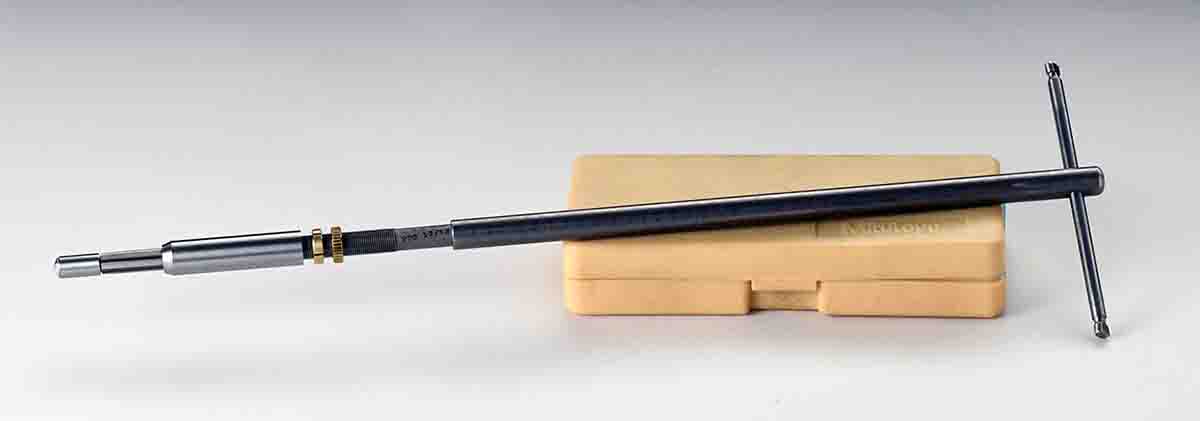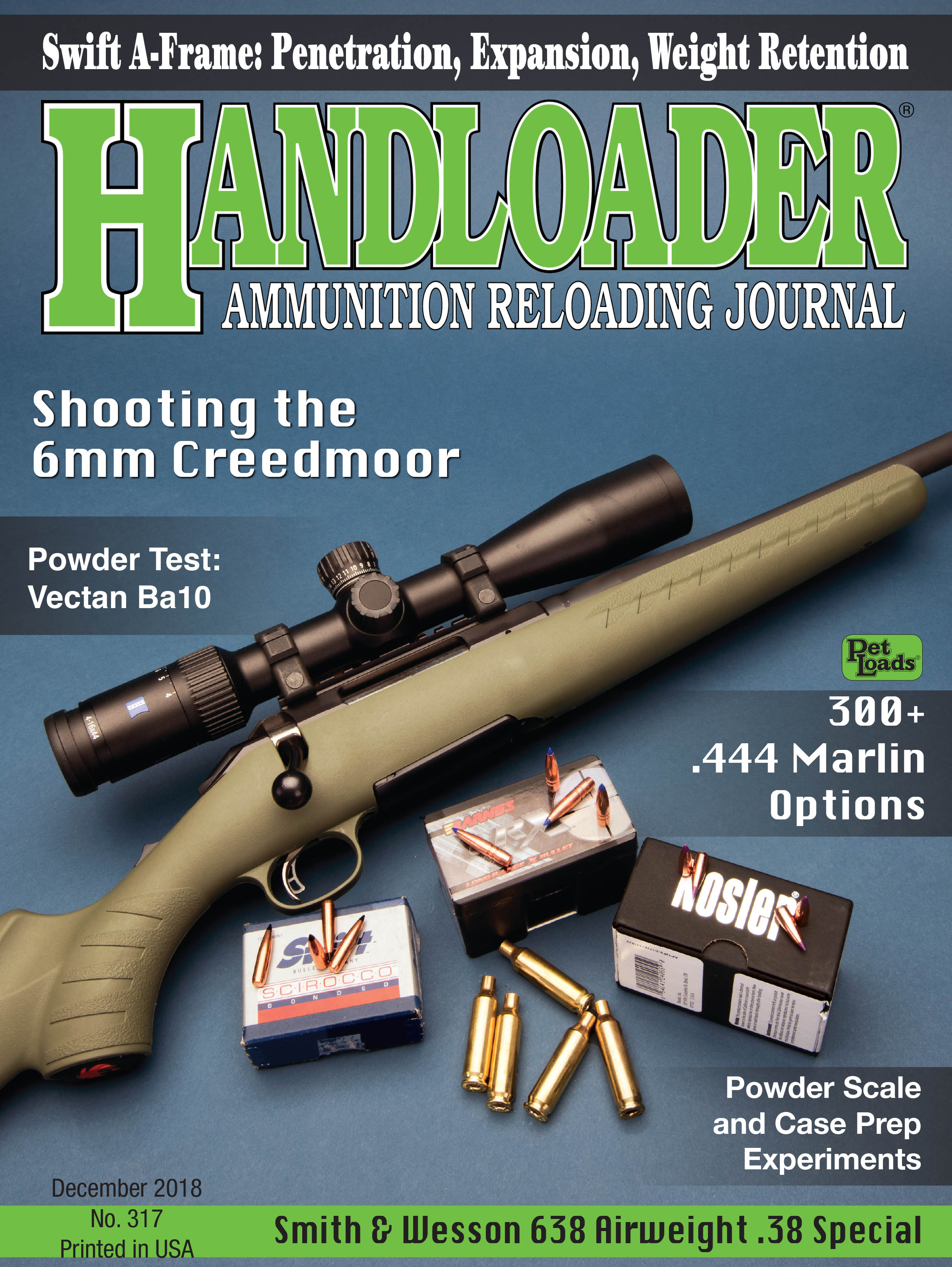Practical Handloading
Increasing Powder Capacity
column By: Rick Jamison | December, 18
Handloaders complain about the deep bullet seating required in some cartridges. The .284 Winchester and .300 Winchester Magnum immediately come to mind. Manufacturers design cartridges for specific action lengths, and sometimes to get more powder capacity and velocity.
In the case of the .284 Winchester, powder capacity is increased with a slightly enlarged case body diameter over standard diameter while keeping within the 2.800-inch overall cartridge length requirement for a short
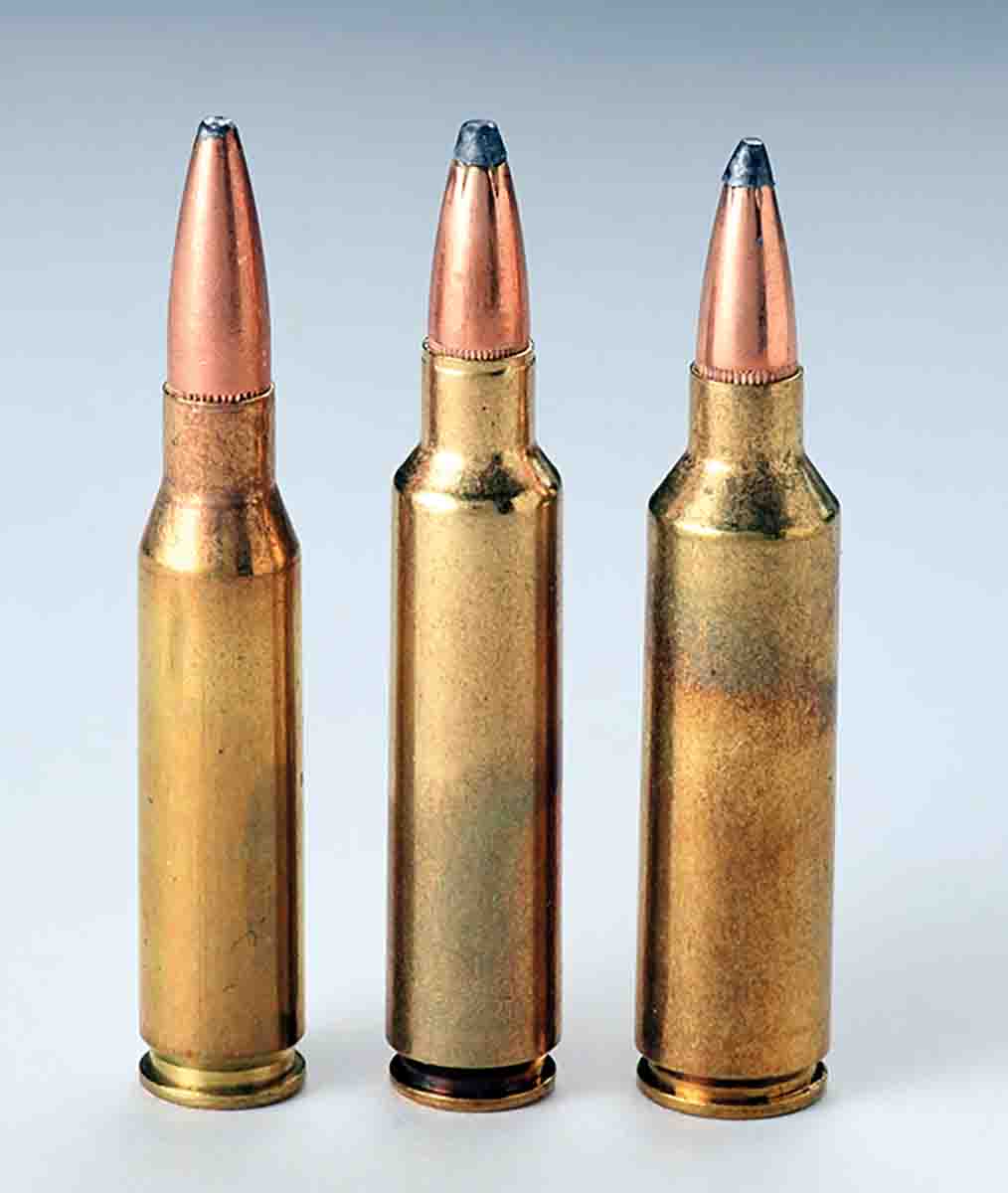
A .300 Winchester Magnum case holds about 93.8 grains of water when filled to the case mouth. A .30-06 holds about 68.2 grains; or an advantage of 25.6 grains for the .300 Winchester Magnum. At this point someone might be thinking that by the time a bullet is seated, the advantage would be much smaller for the short-necked .300 Winchester Magnum. Okay, now seat a Nosler 180-grain Partition in each of the cases to the same SAAMI maximum overall length of 3.340 inches. Now the .30-06 has a usable capacity of 60.4 grains while the .300 magnum has a usable capacity of 83.6, a difference of 23.2 grains. The .300 Winchester Magnum loses 2.4 grains more case capacity than the .30-06 by the “deeper” bullet seating, yet no one denies that the .300 Winchester Magnum has a significant velocity advantage over the .30-06 in the same action length.
But still shooters complain, “If the bullet wasn’t seated so deeply, an even greater advantage could be had,” or so the thinking goes. The idea then becomes to move up to a longer action with more magazine length and a barrel throated out for a longer overall cartridge length. You can even throat out the chamber of an existing rifle by hand without removing
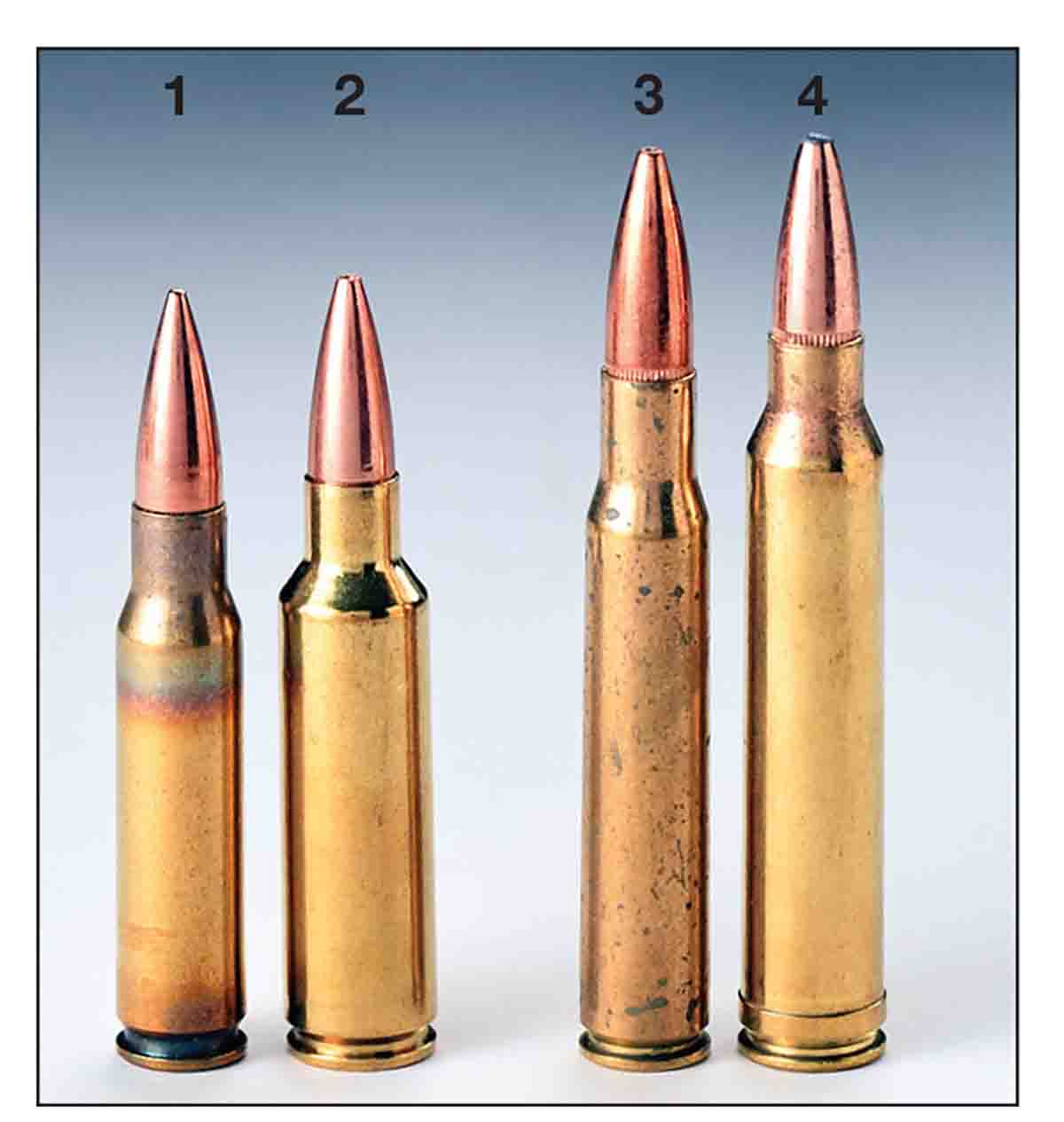
mentioned for a hunting rifle, a longer magazine and action are needed, and in doing so the shooter loses the advantage of a shorter action; less weight, a more compact rifle, a longer barrel for the same rifle length, a shorter bolt throw and stiffer receiver. Some would say that moving up to a longer action defeats the intention for the shorter cartridge. I agree.
But let’s take a look at the supposed advantages in building a custom rifle with a longer action and barrel throat. At the same time we can compare two .300 Winchester Magnum rifles, one standard and one long-throated. This can be done with the QuickLoad/QuickTarget computer program written by the European genius Hartmut Broemel (Neconos.com). It’s a paradox that using a computer program (mathematical calculations) provides a better comparison than would actual shooting because there are just too many uncontrollable variables in the latter, particularly with just one test. Using the .300 Winchester Magnum, as an example, with the Nosler 180-grain Partition mentioned above, we can compare it in two different rifles, one with a standard SAAMI specification .300 Winchester Magnum chamber with an overall cartridge length of 3.340 inches, and the other a custom rifle with a longer action and a barrel throated for a longer 3.640-inch overall cartridge length. Both bullets are seated for these maximum cartridge lengths for comparison. The standard round has deep-seated bullets (.54 inch of the bullet inside the case neck), and the custom round has the bullet seated out (.24 inch of the bullet inside the case neck). Both rifles have magnum-length, 24-inch barrels.
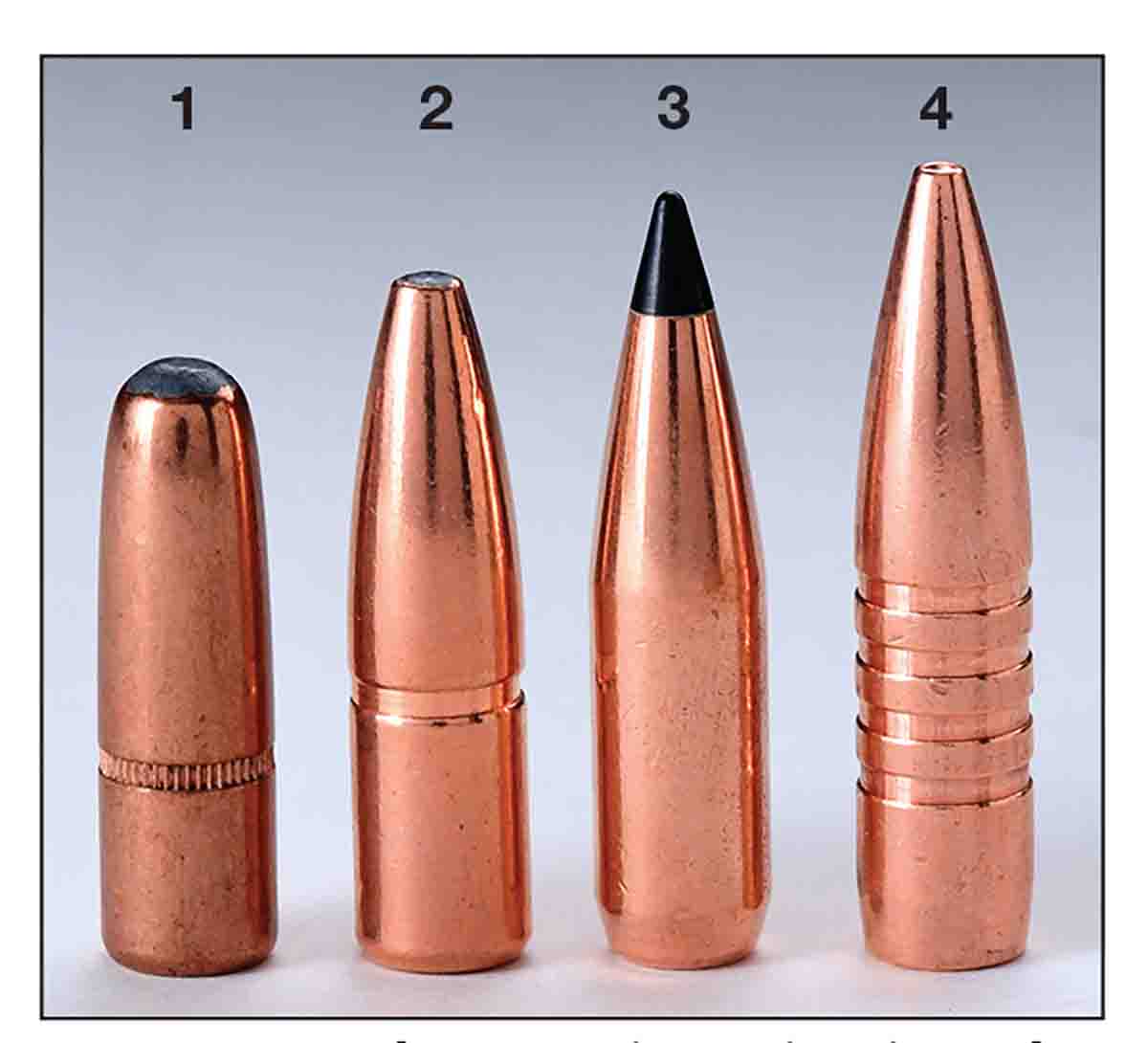
For starters, the deeply seated bullet has a bore travel distance of 21.92 inches while the custom cartridge has 21.62 inches of bore travel. It is like having a barrel .3 inch shorter with the long seating. Next, if both cartridges are loaded to the same peak chamber pressure (approximately 61,300 psi), it takes about 3.4 grains more of H-4831 powder to obtain that pressure in the long-throated rifle.
When fired, by the time the bullet base clears the case mouth with the deep bullet seating, it will have traveled .54 inch and is moving along at about 433 fps with 41,622 psi of chamber pressure. The long-seated bullet will have traveled .24 inch and have attained 226 fps with 25,893 psi. At this point, about 19 percent of the solid propellant will have been converted to a gas with the deep bullet seating, and 10.5 percent of the propellant will have been converted with the long bullet seating. There will be about 62.4 grains of unburned powder blasted into the rifle’s throat with the deep bullet seating, and 72.0 grains with the long bullet seating. The factors of longer bore travel, more efficient propellant burn inside the case with an earlier pressure rise and faster bullet start are nearly always overlooked by the shooter thinking about throating long to seat bullets out.
In the end, the load from the custom rifle with long bullet seating exits the muzzle with 3,034 fps muzzle velocity while the deeply seated bullet exits the muzzle with 3,016 fps. This is a difference of 18 fps at equal peak chamber pressure, and it takes 3.4 more grains of powder to do it with the longer seating. It is a small gain for giving up so much advantage in a shorter action, not to mention the expense of a custom rifle. In most instances, under actual firing conditions and using pressure measuring equipment, I have seen little to no velocity gain with longer throating. A simpler solution to gain capacity is to use a shorter bullet, but at the sacrifice of ballistic coefficient (downrange performance).
